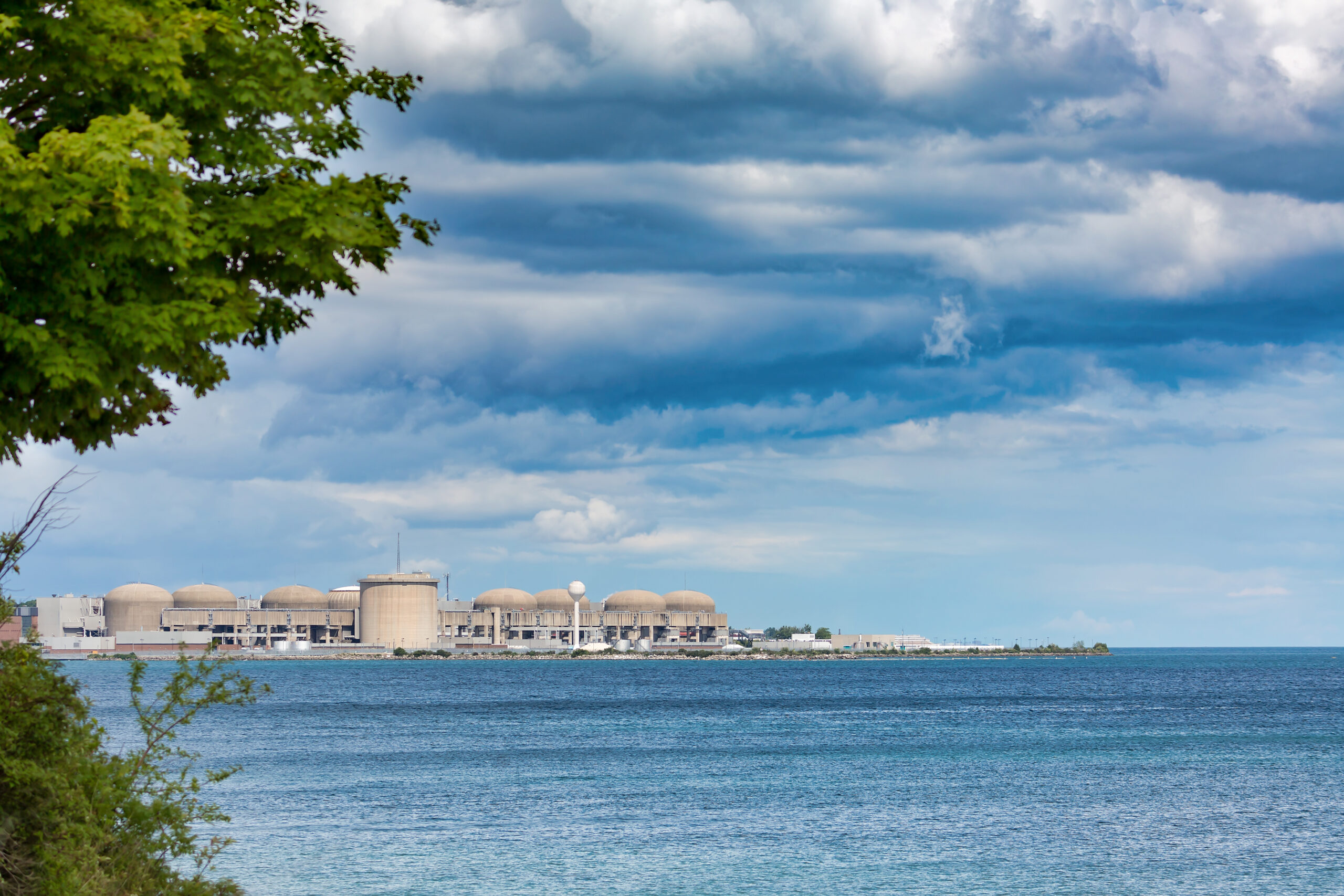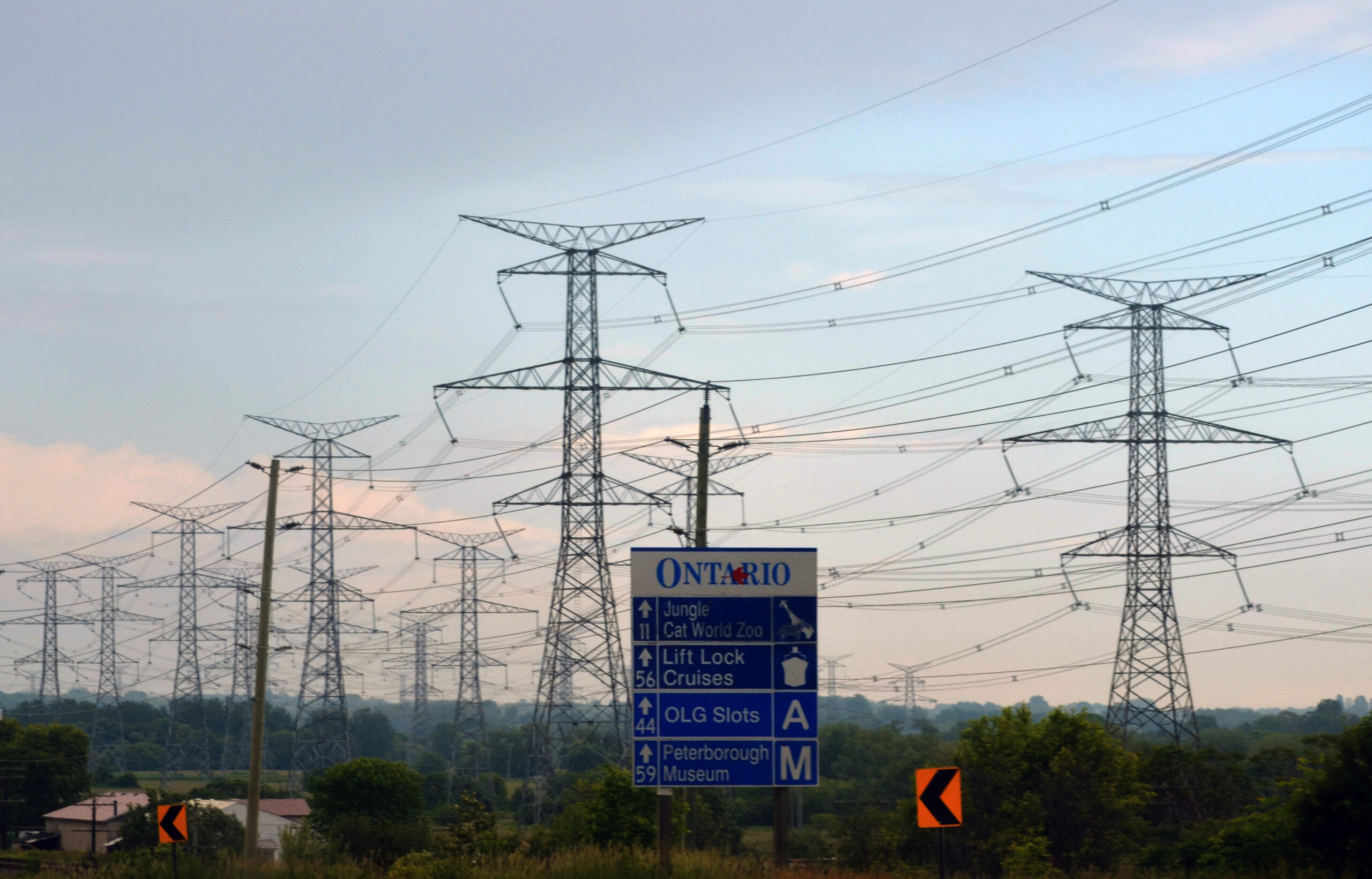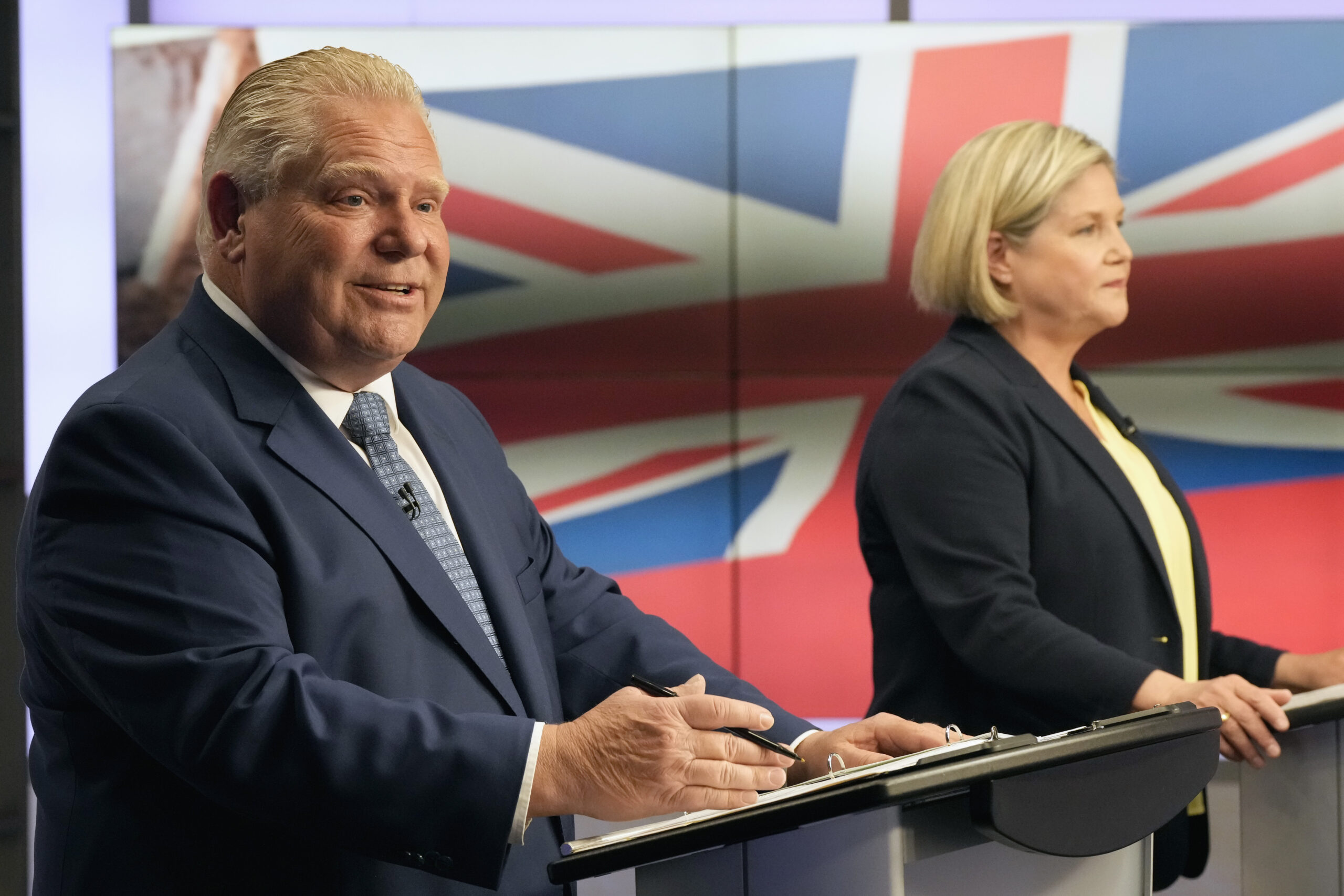
5 things to know about Winnipeg’s big sewage problem
115 billion litres, 70 years to fix, $5.5 billion in lawsuits
Ontario’s power grid is the province’s pride and joy.
It is among the cleanest in the world and the tool by which Ontario achieves all its climate goals. If your power is largely emissions free, everything you do with it is also counted as largely emissions free.
But Ontario’s energy supply is about to become really, really complicated. The province’s thirst for clean energy to power a growing clean economy and electric transportation industry is quickly outpacing supply. By 2025, Ontario will be temporarily without a significant amount of its nuclear energy and so far plans to replace it with less clean, more controversial natural gas. Alternative energy sources and solutions are sparse.
Meanwhile, the climate emergency poses physical threats to the power grid too. In May, hundreds of thousands of Ontario residents were without power for days after a deadly derecho storm. Electricity distribution and transmission infrastructure was destroyed by hurricane-like winds, and scientists say this type of extreme weather event will become more frequent.
The Ford government doesn’t have a plan for all this — yet. Until that happens, here’s what you need to know about Ontario’s power grid and the struggles ahead to keep it clean.
Ontario’s power industry is complicated and layered. Generators like the Crown corporation Ontario Power Generation, which supplies 50 per cent of the province’s electricity, produce the power supply. Transmitters like Hydro One transport power to towns and cities across the province, while local distributors like Toronto Hydro and Hydro Ottawa ensure the power reaches households, schools and businesses. Meanwhile, the Independent Electricity Systems Operator monitors and balances the supply and demand of the entire system.
The industry is regulated by the Ontario Energy Board, which is meant to ensure natural gas and electricity companies follow the rules and don’t abuse customers.
Energy policy, though, is centrally planned and managed by the Ministry of Energy.
It’s pretty clean — 94 per cent to be exact, meaning only six per cent of our electricity supply emits carbon dioxide that contributes to global warming. In total, electricity generation makes up less than three per cent of Ontario’s greenhouse gas emissions.
That’s largely because Ontario decided to eliminate coal-fired power plants, which in 2003 accounted for a quarter of generating capacity. It achieved this goal in 2014, making it the first jurisdiction in North America to do so. To date, this decision is lauded as the single largest emissions reduction measure across the world.
Since 2005, emissions from electricity generation have plummeted by 90 per cent, equivalent to taking over 9.4 million cars in total off the road.
As of March 2022, Ontario’s electricity supply mix was made up of 34 per cent nuclear, 28 per cent natural gas, 23 per cent hydro, 13 per cent wind, one per cent solar and less than one per cent biofuel — though not all used to their full capacity. For example, 60 per cent of Ontario’s energy comes from nuclear power.
This interactive map from the Independent Electricity Systems Operator shows where these many sources of electricity are located across the province.

Very.
According to the Independent Electricity Systems Operator’s 2021 outlook, “Ontario is entering a period of increasing electricity demand.” The operator’s forecasts show that electricity demand will grow an average of 1.7 per cent a year until 2042. A significant portion of this increased demand is coming from political and industrial commitments to electrify transportation, including transit and trucking.
Major demand increases are also coming from the agriculture sector, driven by an expanding greenhouse industry, as well as steel and auto industries that are being urged to decarbonize their emissions-heavy operations.
We need a lot more supply if we want to be prepared for an emissions-free electric future. The operator found that energy shortfalls will begin as early as 2026 and grow substantially over the next 20 years if new non-emitting sources of electricity aren’t found.
Poor planning — and Doug Ford’s government’s erasure of what clean energy plans did exist in the province.
The Independent Electricity Systems Operator projects that current electricity capacity can meet the province’s energy needs until the mid-2030s.
This shortfall is not a surprise. The previous Liberal government tried to plan ahead by signing contracts with wind and solar energy companies. But when the Progressive Conservatives came to power in 2018, they cancelled 758 renewable energy contracts worth $231 million, as well as a $100 million wind farm and a number of energy conservation schemes that could have reduced demand.
Ontario also should have invested properly in energy storage technology, which is needed to make wind and solar power reliable no matter the weather.
We could have had more choices to fill this supply gap. Instead, we’re out of time. Industry experts say the system operator’s mid-2030s projection is generous and that it will change drastically — in large part because of the changes to Ontario’s nuclear generating stations.

Ontario’s decarbonized grid relies largely on nuclear power, which for a long time provided an energy surplus. The problem is that the province’s three nuclear reactors are old and in need of some major TLC. The Bruce and Darlington nuclear generating stations are already in decade-long refurbishment processes that will hopefully allow them to keep operating for another 40 years, but mean they will operate at greatly reduced capacity until 2033. At least one component of the Darlington refurbishment was delayed and over budget, according to reporting by Global News. But Ontario Power Generation said the entire refurbishment remains on schedule to be completed by 2026 within its overall $12.8 billion budget.
Pickering Nuclear Generating Station — a five-decade-old facility that provides 14 per cent of the province’s annual power supply and generates almost 60 per cent of the province’s electricity — was due to be shut down in 2024. The timeline was extended by Ford by a year when he first got elected in 2018. On September 29, the Ford government announced a proposal to extend this by another year to “support electrification and the incredible economic growth that our province is experiencing right now,” Energy Minister Todd Smith said at a press conference, where he was surrounded by some of the dozens of people who work at the Pickering plant. This would require the approval of the Canadian Nuclear Safety Commission.
The second extension comes just a month after Smith said there were no plans to extend the plant’s life. Any further operation beyond 2026 would require a full refurbishment of the plan due to aging infrastructure, Smith said, adding he has asked Ontario Power Generation to run a feasibility study to explore this over the next year.
Several people who work in and study Ontario’s energy industry told The Narwhal that any further extension of Pickering’s operation would be a Band-aid solution to long-term planning failures — and an expensive one at tha. According to a 2020 document filed by Ontario Power Generation at the Ontario Energy Board, the station has the second highest operating costs of North America’s 63 nuclear stations.
“We are in this situation as a result of the province very successfully painting itself into a corner in terms of electricity supply options,” said Mark Winfield, a York University professor in the faculty of environmental and urban change. He cited the Ford government’s axing of efficiency and renewable programs, and its “refusing to talk to Quebec about potential imports.”
Several times during a Sept. 29 press conference, Smith said a one-year extension would guarantee Ontarians have “the power we need” until 2026. The energy minister didn’t answer questions about what specific steps will be taken to guarantee a robust and clean energy supply after that timeline.
“The Pickering extension is a get-out-of-jail-free card,” one energy industry official who wasn’t authorized to speak publicly told The Narwhal. “It will buy [the government] some time. Hopefully they won’t squander it.”
The easiest option available is to let the natural gas taps run.
The Independent Electricity Systems Operator is looking to boost natural gas supply in the short term. At the moment, Ontario’s natural gas plants operate 60 per cent of the time, but they will run at full capacity by 2033. The operator recently announced four new contracts for natural gas plants. Contradictorily, it will also be releasing its reports on the possibility of a moratorium on new gas generation and a plan to get to zero emissions in the electricity sector this fall.
Yup, and by an extremely concerning amount.
The Independent Electricity Systems Operator projects that emissions from the grid will increase by 375 per cent by 2030 and by more than 600 per cent by 2040. This makes Ontario the only Canadian province “that seems to be planning on major increases in its electricity-related emissions,” according to an op-ed in the Hamilton Spectator last December by Winfield and Colleen Kaiser, a postdoctoral fellow at the University of Ottawa.
This solution is not without controversy. More than 30 Ontario municipalities that are home to 60 per cent of the provincial population have passed resolutions urging Queen’s Park to phase out natural gas plants in order to fight the climate crisis.
Last year, Energy Minister Todd Smith asked the operator to study whether this phase-out was possible by 2030.
The operator warned it wasn’t, and that such a rushed timeline would lead to blackouts and higher electricity bills. However, critics said the operator’s conclusion lacked cost-effective, climate-conscious alternative pathways.
According to the Ontario Clean Air Alliance, there are a number of things the province could try. These include banning gas-fired electricity exports to the United States. The group also suggested purchasing more solar and wind power and expanding transmission lines to Quebec in order to triple the purchase of its hydropower.
The alliance also thinks electric vehicle infrastructure should include bi-directional chargers, which would allow vehicles to be plugged in and used like generators on houses, including during blackouts. Electric vehicles are only as clean as their power source, but using their batteries to smooth out fluctuations on the grid could reduce the need to fire up gas plants when other, cleaner sources of energy are maxed out.
Multiple reports by independent energy associations and research associations have also urged the Ontario government to develop detailed, long-term power system plans that prioritize the need to decarbonize the grid.
The energy industry seems to also be searching for innovative solutions. In March, the Ontario Energy Board and the Independent Electricity Systems Operator said they have committed $37 million to pilot projects that will help communities store and produce energy locally.

Well, electricity prices are already rising because of the supply crunch, emissions from the grid are on the rise and Ontario doesn’t have a long-term plan to meet our energy needs.
Despite the Progressive Conservatives’ mass shutdown of solar and wind projects, Ford confusingly said during last June’s election that he “won’t be happy” until the grid is 100 per cent emissions free. He’s likely to be sad for a long while then, as Ontario will have to first identify new sources of clean energy for our houses, businesses, schools, hospitals and vehicles, and then build or secure them.
Meanwhile, the federal government is urging provinces to meet a new net-zero clean electricity standard by 2035 — a decision that will have a huge impact on the future of Ontario’s power generation.
If Ontario’s power grid is projected to become less clean, that will mean the emissions-reduction efforts of municipalities, residents, businesses and more won’t count as much towards our goals — or towards a healthier climate. What happens in the energy industry will impact all of us.
Updated July 22, 2022, at 4:28 p.m. ET: This article was updated to correct a sentence summarizing a 2017 report by Global News regarding the Darlington refurbishment. The Global News report stated that one component of the project was delayed and over budget, however the news report did not state that the entire project was delayed and over budget. The article was also updated to add an additional statement from Ontario Power Generation explaining that it says the overall project is on schedule to be completed by 2026 and that it would be within its $12.8 billion budget.
Updated on September 29, 2022 at 3:46 p.m. ET: This story has been updated to include the Ontario government’s decision to seek permission to extend the life of the Pickering nuclear generating station, as well as the Independent Electricity System Operator’s natural gas acquisitions and studies.
Get the inside scoop on The Narwhal’s environment and climate reporting by signing up for our free newsletter. On a warm September evening nearly 15...
Continue reading
115 billion litres, 70 years to fix, $5.5 billion in lawsuits

Climate change, geopolitics and business opportunities power a blue economy

10 billion litres of sewage are dumped into Winnipeg’s lakes and rivers each year. Some...
